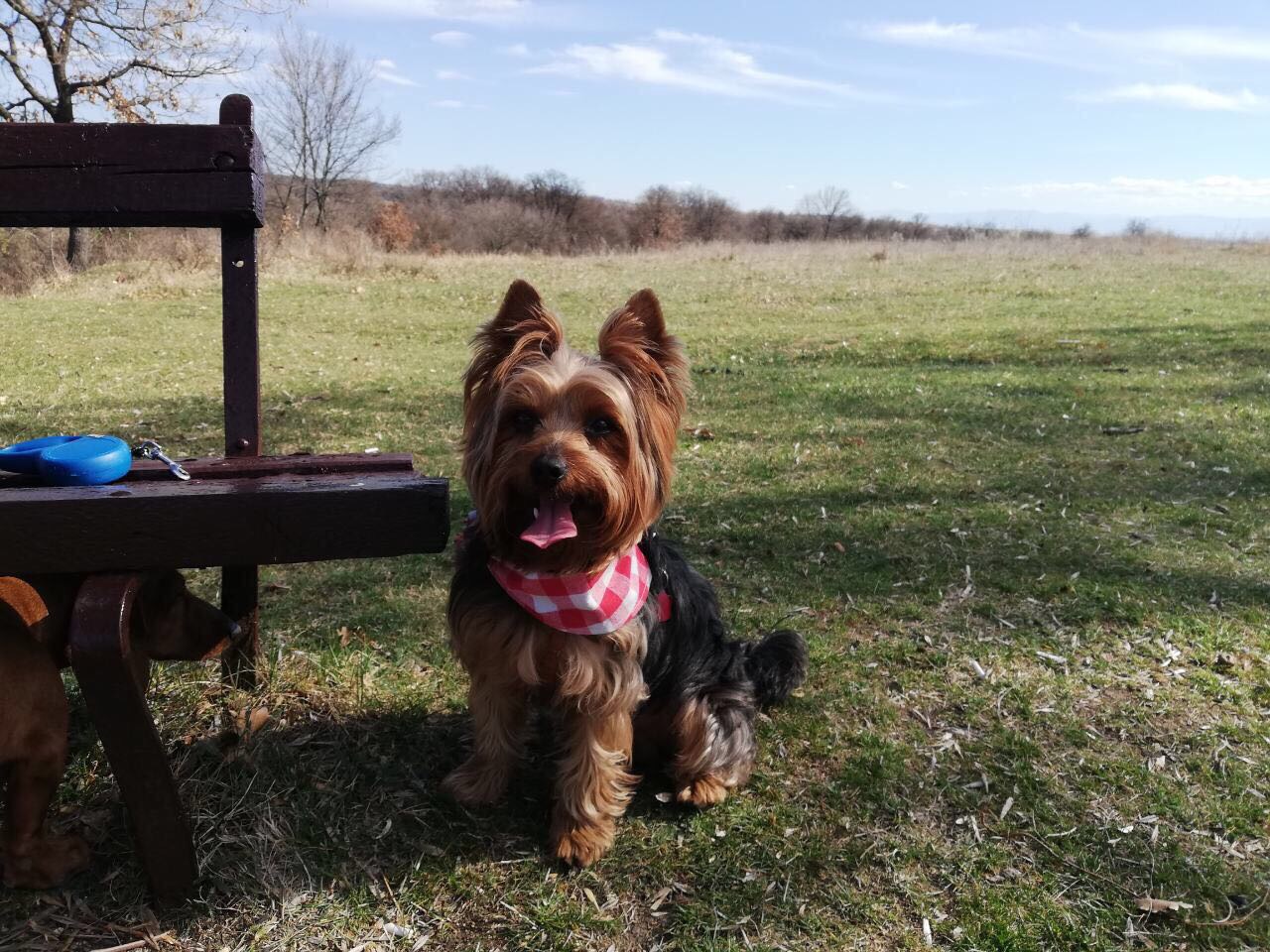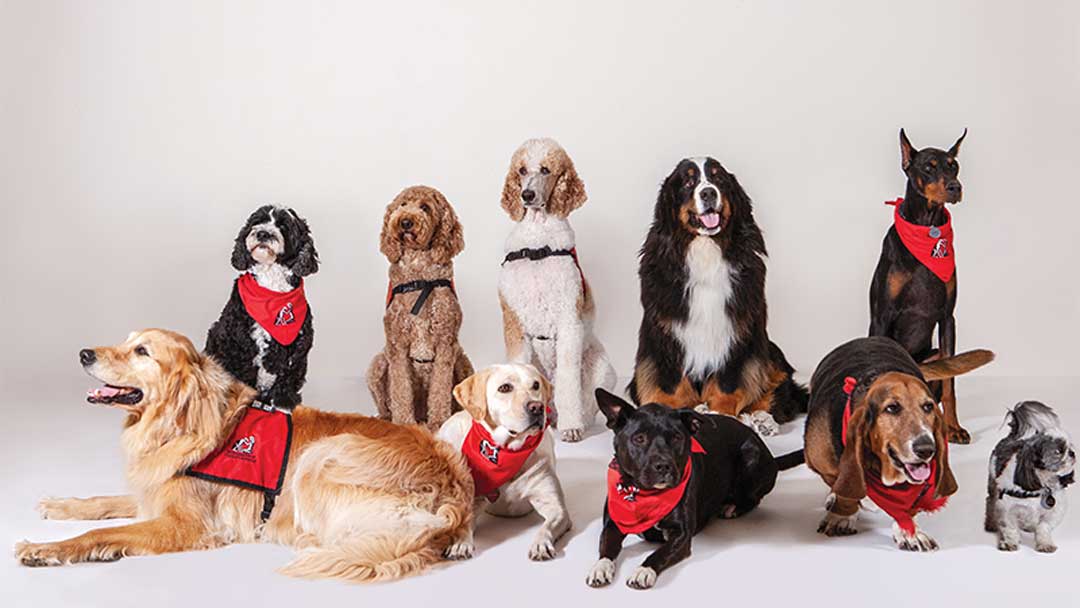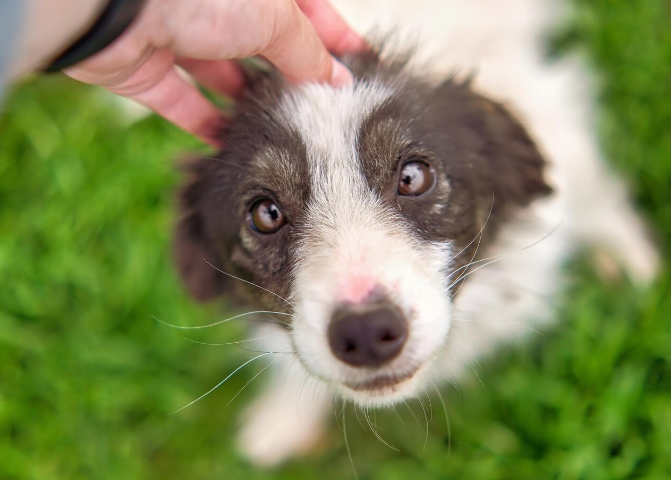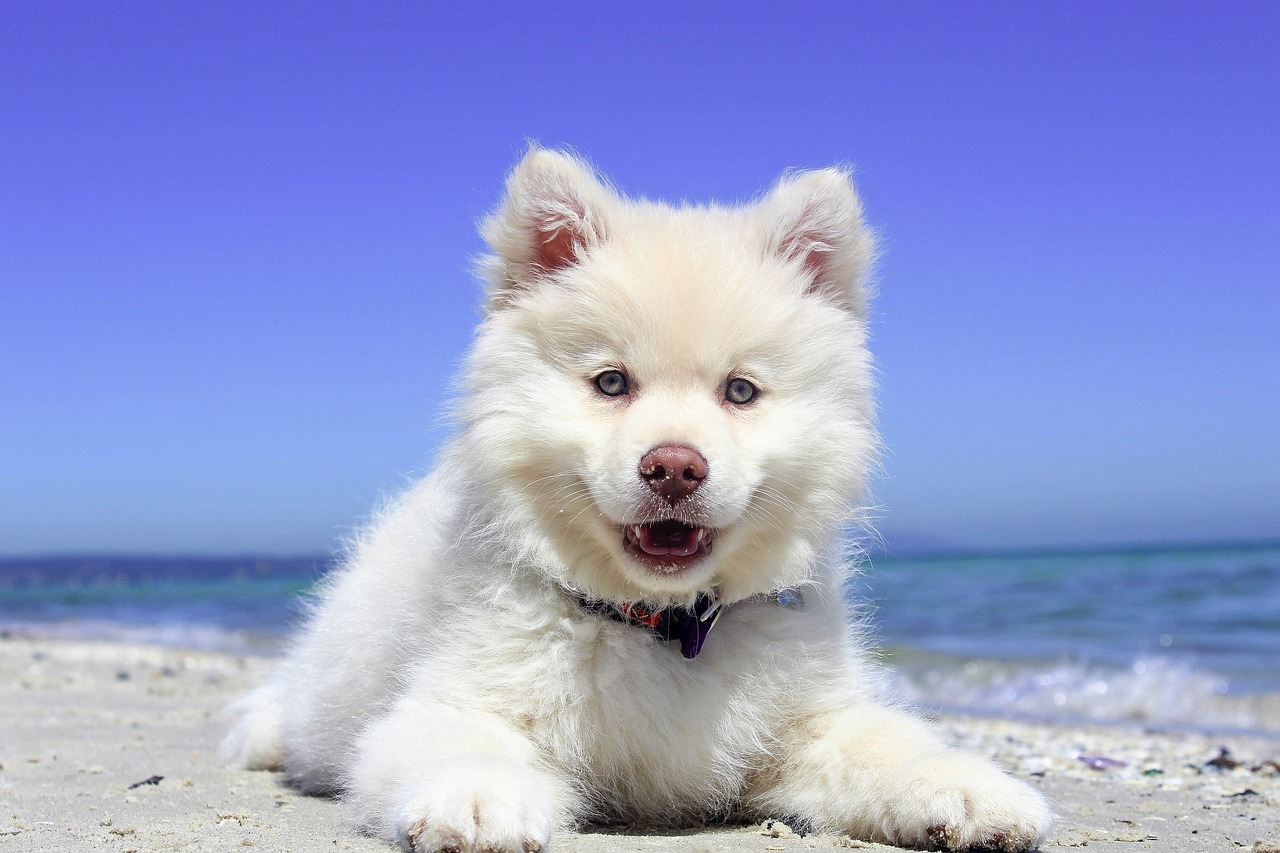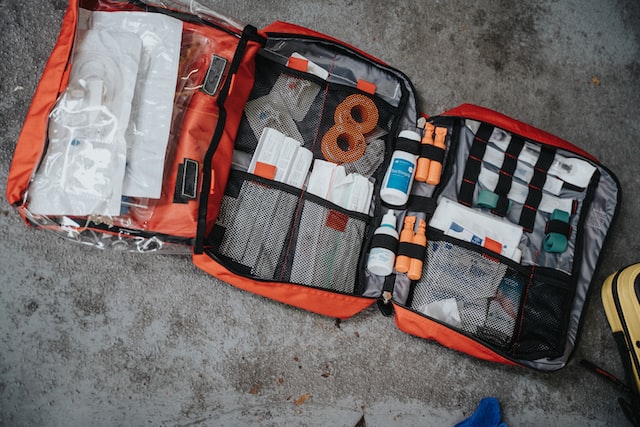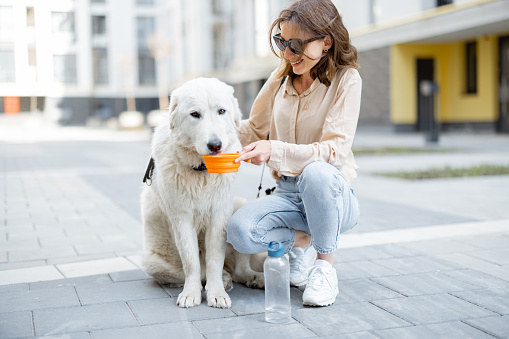
Many of us enjoy summer, as we usually pair it with engaging in various activities outdoor, meeting family and friends, going on a vacation and enjoying long walks and funny games with our paw friends. Despite all the pleasant activities, that the warm weather allow us to do, there are some factors during the summer, that affect our dogs’ health. As loving and considerate dog owners, we should make sure that our pets will stay safe during the hot days of the year.
In order to help you properly take care of your doggy during the summer, we would like to give you some helpful tips.
Water & Shade
Providing our dogs with enough water and shade may sound a bit cliché, but sometimes our hectic lifestyle affects our memory, and we tend to forget some important things. While at home, you should change your dog’s water every day, especially in hot days. Make sure that your canine always has access to fresh water. And that the water bowl is filled. Also, you should not forget to put the water bowl at a place that your dog can easily reach.
When going outside for a walk, you should always prepare a bottle of water for your paw friend. You can also gently spray him/her as needed, to help him/her cool off.
We highly recommend that you plan your walk time and avoid going outside when the temperatures are very high, i.e. in the afternoon. You may want to choose areas that provide shade and keep your paw friend in the shade as much as possible.
Do Not Leave Your Dog in the Car
Do not make the mistake of leaving your dog unattended in a car during the hot season. Temperatures inside a car during the summer can get by 30 degrees higher than the temperatures outside. This means that if the temperature outside is about 36 °C / 96.8 °F, the temperature inside the car will be 66 °C / 150.8 °F. You understand how dangerous it would be to leave your dog in the car at this temperature…
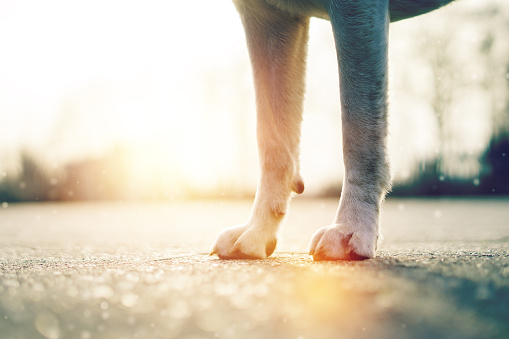
Surfaces to Avoid
Taking your dog for a long walk on a street, with a heated up asphalt, can hurt his/her paws. If you do not have time to walk your paw friend in the morning or in the evening, you should at least try to avoid surfaces like hot pavement during the hot hours. We would recommend that you adjust your walk route so that you have access to grassy areas. Also, there are dog shoes on the market, designed to protect your canine’s paws when temperatures outside are really high.
Another type of surface you may want to avoid are treated lawns. There should be a warning sign, that the lawn is treated with chemicals and owners should keep their dog away from it. This is usually valid for at least 48 hours after chemical application.
Parasite Control / Vaccination
Although woody and grassy areas may be a good option to hide from the heated up asphalt, many insects thrive in these areas during the hot season. You should make sure that your dog has gone through parasite control, especially during the summer. Parasite control is usually conducted on a monthly or bi-monthly basis, depending on the location and your dog’s lifestyle. The more time he/she spends outdoor, and the more animals he/she meets, the bigger the change is for parasites to be transferred to him/her.
Also, you should not neglect the regular veterinarian visits, so that your dog is up-to-date with all vaccinations.
Safe in Water
A nice walk to the beach or to a river with your little fellow is a good option to spend a hot summer day. However, you should always supervise your dog, if he/she is eager to swim. Some dog breeds like the Poodle, the Newfoundland, the Golden/Labrador Retriever, the Irish Setter, the Portuguese Water Dog...etc., are known as great swimmers. Other dog breeds such as the Bulldog, the Pug, the Bull Terrier, the Basset Hound, the Boxer, the Shih Tzu...etc., are not good swimmers due to their physical features. If you want to make sure that your dog will be safe, you may want to put a life vest on him/her.
Also, if the water is contaminated, your dog may get sick. This is especially valid for slow-moving water and river banks. If your canine has any cuts or wounds that have not fully healed yet, you may want to prevent him/her from getting in the water.
Another tip in regard to keeping your pup safe in water is not letting him/her drink seawater. Due to the salt content, he/she may get sick. Prior to going on a walk or a picnic with your paw friend, you may want to prepare a bottle of fresh water for him/her.
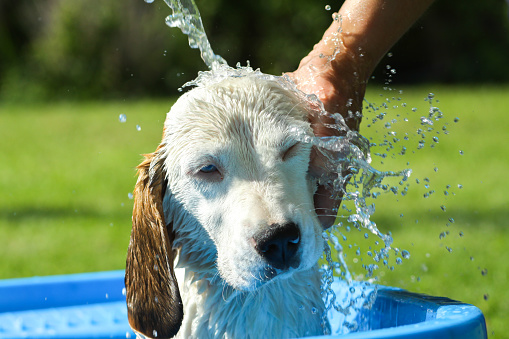
Apply Sunscreen
This may sound a bit funny, but some dog breeds, especially the short-coated, the hairless ones, or those with thin coat and pinky skin, need to have sunscreen applied to their skin. Actually all dogs have more sensitive body areas such as the ears, the nose, the area around the lips and the belly, that you should protect during the summer.
Avoid Too Demanding Exercises
If your dog is highly energetic and needs a lot of exercises, you may want to provide an alternative to running/walking/playing for a long time outdoor. It would be a good idea to give your paw friend toys, like a ball ladder or puzzle toys with hidden treats inside, so that he/she can stay engaged while at home or in the garden/backyard.
If your pup has a low-energy level, you should be even more considerate, as he/she is not likely to endure exhausting activities in the high weather.
Treats and toys are valuable positive reinforcement tools that may encourage your dog to stay at home.
Recognize the Signs of Heatstroke
It is crucial for your dog’s survival, that you are able to recognize signs of heatstroke during the hot season. Common symptoms of heatstroke in dogs are:
- Excessive drooling;
- Heavy panting;
- Increased body temperature- higher than 39 °C / 103 °F;
- Reddened gums;
- Acute kidney failure;
- Irregular heart rates;
- Shock;
- Seizure;
- Muscle tremors;
- Back and tarry feces;
- Vomiting;
- Diarrhea;
- Unsteady legs.
Fireworks
We pair summer holidays like the 4th of July with pleasant experience and joy. However, these holidays may be very frightening to our paw friends due to the fireworks, and very loud noises in general, typical for these days. Your dog may get so scared, that he/she runs away. A rarely known fact is that most pets in the US go missing on July 4th.
Identification
It is recommended that your dog wears identification, not only on the 4th of July but on any other day, especially during summer. Due to the significant time spent outdoor and the presence of many distractions, your canine may get lost. Putting an ID card/an ID tag/a bandana or any identification gear on your doggy, may help you find him/her, if he/she gets lost.




